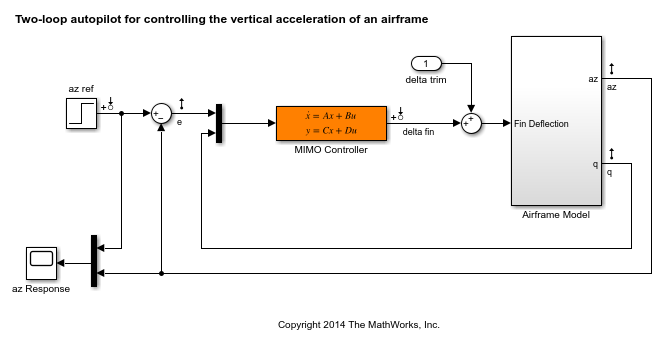evalGoal
Evaluate tuning goals for tuned control system
Description
Examples
Input Arguments
Output Arguments
Tips
For MIMO feedback loops, the
LoopShape,MinLoopGain,MaxLoopGain,Margins,Sensitivity, andRejectiongoals are sensitive to the relative scaling of each SISO loop.systunetries to balance the overall loop-transfer matrix while enforcing such goals. The optimal loop scaling is stored in the tuned closed-loop model orslTunerinterfaceTreturned bysystune. For consistency,evalGoal(R,T)applies this same scaling when evaluating the tuning goals. To omit this scaling, useevalGoal(R,clearTuningInfo(T)).Modifying
Tmight compromise the validity of the stored scaling. Therefore, if you make significant modifications toT, retuning is recommended to update the scaling data.
Version History
Introduced in R2017b
See Also
systune | genss | viewGoal | systune (for slTuner) (Simulink Control Design)
